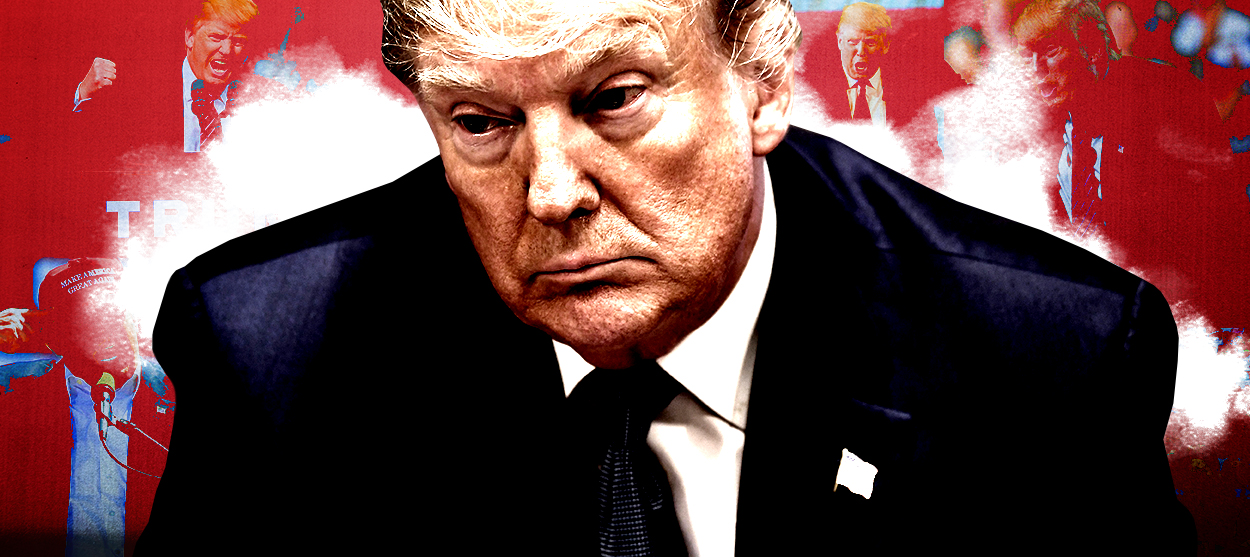What has 'Trump the disrupter' actually disrupted?
On the exceedingly conventional economics of the Trump presidency


For about 15 minutes a few years ago, being an "Uber Republican" was kind of a thing. Some GOPers hoped that by associating themselves with the Silicon Valley unicorn that was disrupting the taxicab industry, they could freshly rebrand themselves as a techy, millennial-oriented party. Uber Republicans claimed to love dynamic markets, embraced the sharing economy, and were ready to disrupt the political status quo in Washington. How do you do, fellow kids!
Clearly the technophobic and economically nostalgic Donald Trump wasn't the sort of disrupter that the Uber Republicans were envisioning. Still, Trump supporters today frequently call him a "disrupter" who's totally changing how things are done in the nation's capital. And there's some truth there. Trump has certainly disrupted numerous norms — rhetorical, financial, ethical — about presidential behavior. He's also generated a lot of economic uncertainty for business.
But three years into the disrupter-in-chief's first term, it's remarkable how little he's really changed anything of substance. Trade policy is the heart of Trumponomics, and thus there should be no better place to look for serious, game-changing disruption. Yet the closer one looks, the more it appears that Trump has done little more than nibble at the edges of the status quo.
The Week
Escape your echo chamber. Get the facts behind the news, plus analysis from multiple perspectives.

Sign up for The Week's Free Newsletters
From our morning news briefing to a weekly Good News Newsletter, get the best of The Week delivered directly to your inbox.
From our morning news briefing to a weekly Good News Newsletter, get the best of The Week delivered directly to your inbox.
The Trump-negotiated U.S.-Mexico-Canada Agreement, just agreed to by Democrats, is a perfect example of this surprising continuity. It's a successor to the North American Free Trade Agreement, long disparaged by Trump. As he tweeted Tuesday, "America's great USMCA Trade Bill is looking good. It will be the best and most important trade deal ever made by the USA. ... Importantly, we will finally end our Country's worst Trade Deal, NAFTA!"
But NAFTA and USMCA are more alike than different, most notably in having pretty much zero tariffs between the three nations. If you loved NAFTA, you should be okay with USMCA. And if you loathed NAFTA, you probably still have lots of problems with USMCA — though happy with the changes Democrats made. The alterations just aren't that significant. The IMF, for instance, estimates that the impact on U.S. economic growth will be "negligible." All of which is fine since the NAFTA Classic was a modest plus for the American economy, according to most economic studies.
Nor will any conceivable deal with China radically alter the economic relationship between the two nations. U.S. trade deficits with China will continue to be large, and Beijing will continue its subsidy-heavy state capitalist model. A "phase one" trade deal might address some American concerns on intellectual property and include sizeable purchases by China of American agricultural products, but that's it. Few analysts are expecting a more ambitious "phase two" deal anytime soon.
Trump's other major economic initiative is the tax cut. But that doesn't seem like it's been much of a game changer, either. When the Tax Cut and Jobs Act was passed in late 2017, Trump said he thought it would help economic growth "go to 4, 5, and maybe even 6 percent, ultimately."
A free daily email with the biggest news stories of the day – and the best features from TheWeek.com
But real GDP growth last year was 2.9 percent, and Wall Street thinks 2019 growth will finish closer to 2 percent or so. That's basically what the economy did throughout the Obama years post recession. And there has not been much change in job growth, either, between the final year of the Obama presidency and the first of the Trump presidency. Of course, Trump could take credit for helping lengthen an ongoing expansion, now in its record 11th year, that began during his predecessor's tenure — no small achievement. But that would mean Trump humbly conceding that he inherited a decent economy that didn't need the sort of radical revamp implied by his "Make America Great Again" campaign slogan. It would mean conceding that America was in no way a poor country that needed Trump's razor-sharp business acumen to make it rich again.
Indeed, the American economy's more glaring economic problem today is one that existed before Trump took office: weak worker productivity growth. It was a problem then, and it remains a problem today. The tax cut was supposed to help fix it by boosting investment. But after a brief post-tax cut surge, investment has trailed off. And with budget deficits projected to rise well beyond a trillion dollars next year and beyond, the tax cut will likely get offset by tax hikes at some point.
So after all the Trumpian chaos, it's the same economy with the same strengths and weaknesses. Well, we'll always have the tweets, I guess.
Want more essential commentary and analysis like this delivered straight to your inbox? Sign up for The Week's "Today's best articles" newsletter here.
James Pethokoukis is the DeWitt Wallace Fellow at the American Enterprise Institute where he runs the AEIdeas blog. He has also written for The New York Times, National Review, Commentary, The Weekly Standard, and other places.
-
 Heavenly spectacle in the wilds of Canada
Heavenly spectacle in the wilds of CanadaThe Week Recommends ‘Mind-bending’ outpost for spotting animals – and the northern lights
-
 Facial recognition: a revolution in policing
Facial recognition: a revolution in policingTalking Point All 43 police forces in England and Wales are set to be granted access, with those against calling for increasing safeguards on the technology
-
 Sudoku hard: December 14, 2025
Sudoku hard: December 14, 2025The daily hard sudoku puzzle from The Week
